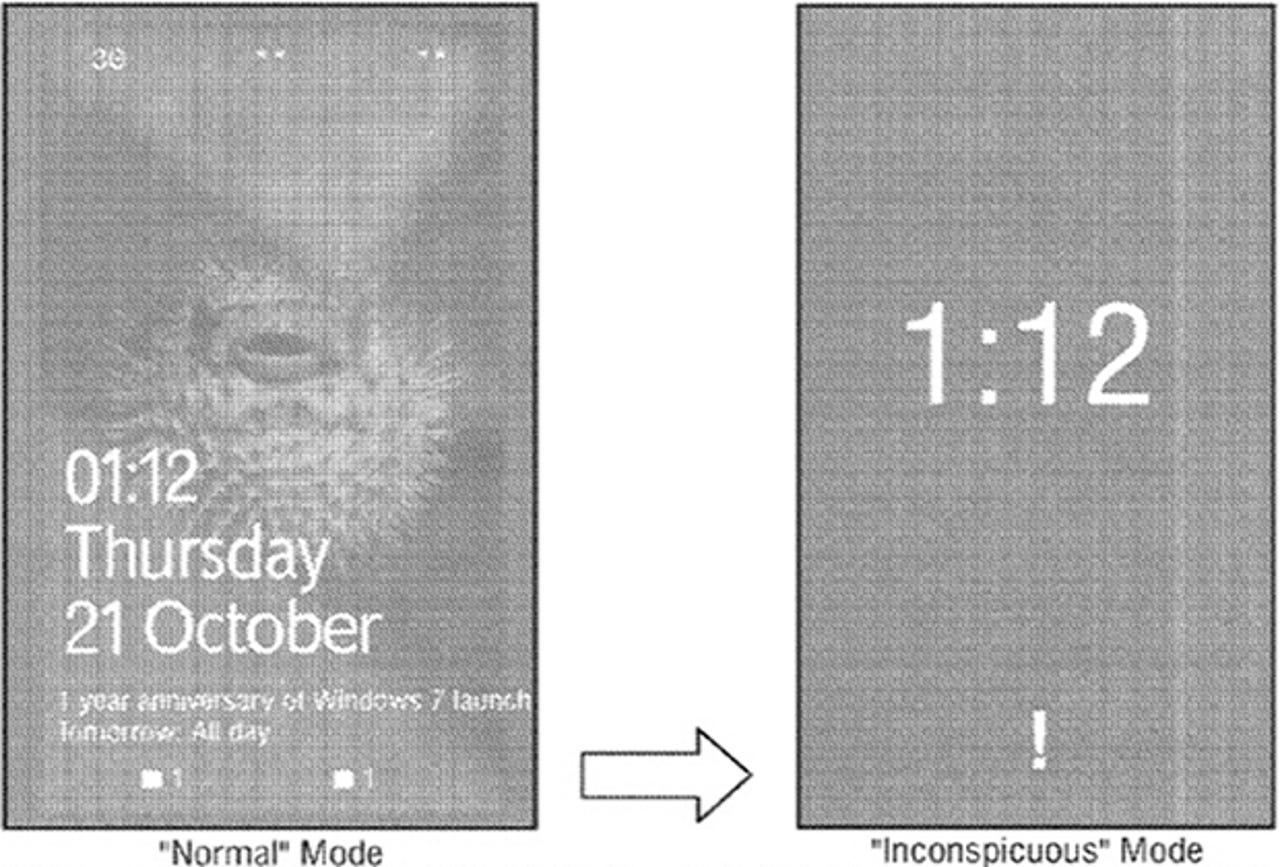Microsoft aims to secure patent for 'inconspicuous' smartphone use

The Redmond giant has filed a new patent application detailing an 'inconspicuous' mode for smartphones.
Microsoft's patent application, submitted to the U.S. Patent and Trademark office (USPTO) in July 2011, describes a new brand of technology called an "Inconspicuous Mode" tailored for smartphones.
The abstract of the patent filing, n.20130012270, says that the "inconspicuous mode of operation" can be used to present a "reduced set of information" on a display, in comparison to when the smartphone is activated in a standard way. By activating the mode, a mobile device's screen "is less obtrusive or conspicuous to individuals."

The patent also states that this type of mode can be activated manually or through sensors. So, if you are in a dimly-lit restaurant or watching a film at the cinema, then the "inconspicuous" setting could automatically activate based on environment detection, and then revoke back to normal settings later.
Microsoft says:
"Mobile communication devices are increasingly important and are in common use in many environments. Accordingly, individuals often keep them on their person throughout large portions of the day. One problem with the ubiquity of these devices in so many different environments is that their use in not appropriate in all settings.
As one common example, in a theater the sound from a mobile communication device and the light from its display can be distracting to other theater patrons. Even if the user deactivates certain features such as audio notification of incoming calls and text messages, users may still rely on other features while in the theater."
If accepted, the patent could mean that Microsoft could develop a new kind of mode -- going beyond "silent," which would make a smartphone's display subtle enough not to cause annoyance in places where flashing lights and keypad sounds are not welcome.
In the same way as most patent applications, we don't know whether this patent will ever be used. However, it's possible that in the future we will see Windows Phone models that have learnt an element of etiquette.